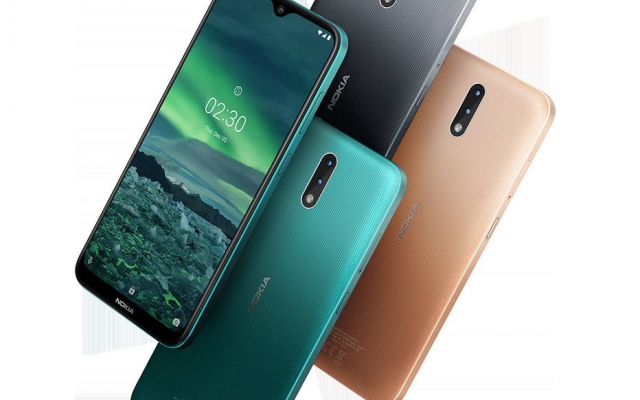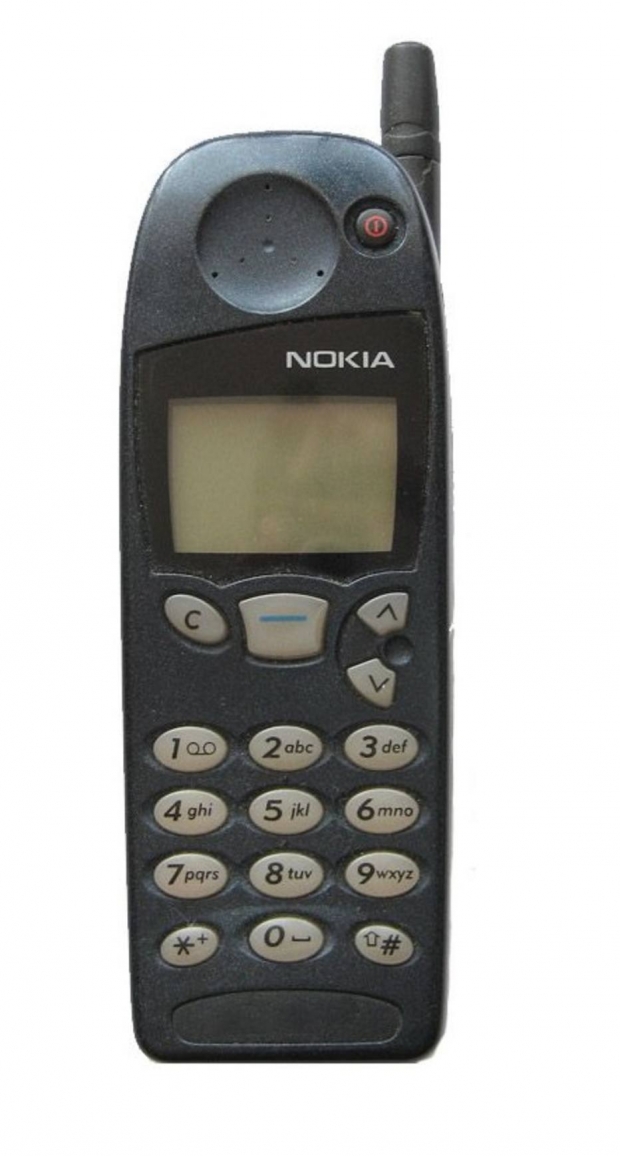
Sold for R $ 900, Nokia 2.3 represents the brand's return to Brazil
She came back and depended on the executives' promise, now to stay. One of the brands that helped Brazil to understand what a cell phone was, Nokia starts again this Sunday, 3, its trajectory in the national market. As of this date, Nokia 2.3 starts to be sold in the country, a smartphone that carries the Finnish brand and bets on price (R $ 900) and nostalgia to return to occupy the pockets of Brazilians. But this is a Nokia that has changed a lot, showing that not everything is the same as it was before.
Pioneer in the cell phone market, with models such as the snake game cell phone (Nokia 5110) or the movie banana phone Matrix (Nokia 8110), the Finnish brand has had a tumultuous path in recent years. In 2013, Nokia's mobile device division was purchased by Microsoft. Shortly thereafter, with the failure of the Windows Phone operating system against rivals Android (from Google) and iOS (from Apple), the area was put aside by the company founded by Bill Gates.
At the end of 2016, by contract, the rights to the Nokia brand returned to Finnish, which remained as a manufacturer of technology for telecommunications. The company then ceded the use of the brand to HMD Global, a company recently founded by former Nokia employees to make Android-based smartphones for the entire world. Since February 2017, HMD Global has launched devices in more than 50 countries, including several markets in Latin America.
Now, Brazil's turn has come. a strategic country for us. is a private market, so we need to learn the processes little by little and make adaptations, says Juan Olano, HMD Global portfolio director for the Americas, in an interview with state. According to the report, the plan was for the premiere to happen a little earlier, but the progress of the process was affected by the coronavirus pandemic.
Here, HMD has a strong partner: the local manufacturer Multilaser that will take care of distributing the devices to stores throughout the country, especially after the period of social isolation has passed. It is a partner that brings us important capillarity, especially in physical retail, where we need to be to be known, says Junior Favaro, director of marketing and sales at HMD Global in Brazil and also a Nokia veteran here. He bets on the sales power of Mother's Day, a strong date for the sale of smartphones, to draw attention to his product.
Remember Nokia's most striking phones

Created in 1992, it was the first mass-produced cell phone for GSM networks, a frequency band used today in cell phone networks in several countries, including Brazil. The phone, which could receive SMS messages, marks the transition from analogue to digital cell phones.

To save the world from machine oppression, a stylish cell phone was needed. And that's how the 1999 Matrix movie chose a Nokia cell phone launched three years earlier to be the accessory of the protagonist Neo. With its long and curved body, the 8110 also earned the nickname “bananfone”.

Perhaps the snake game was the first major mobile gaming hit in history. Its existence and popularity is due to the 5110, launched in 1998 and the first Nokia device to feature the game.

When you think that Nokia cell phones can withstand even a nuclear bomb, this model we are talking about. The 3310 is one of the company's most iconic devices, and the sales numbers are proof of that. In the early 2000s, 126 million units were sold worldwide.

In the middle of the past decade, Finnish cell phones will be able to play MP3 files. Launched in 2007, the 5310 was perhaps the most popular of them – thanks to the design that had the music reproduction buttons on the side.

With Nokia already in Microsoft's hands, Nokia tried one last madness in its history: a smartphone with a 41 MP camera. In 2013, the idea was shocking. The iPhone had an 8 MP camera and the Galaxy S 13 MP. It did not sell well, but it pointed out new horizons for the industry.
Bet
With a suggested retail price of R $ 900, Nokia 2.3 is one of Nokia's simplest smartphones. The first digit of each model shows his family, and the more equipped the device is. The second number is the generation, which explains that he is the fourth generation of his family, explains Olano.
With 6.2-inch screen, dual-lens rear camera and 32 GB of storage, in addition to a 4,000 mAh battery, it has interesting specifications that can mess with the category of entry-level smartphones, the most popular price range in Brazil . According to figures from consultancy IDC Brasil for the year 2019, 48.5% of the 45.5 million devices sold in the country last year cost between R $ 700 and R $ 1.1 thousand.
Initially, the Nokia 2.3 will arrive in Brazil imported, but the company does not rule out making models here in the near future. Outside, it costs US $ 130 (around R $ 700). We try to bring the right price to the Brazilian market, says Olano. Without going into details or making promises, the executives of HMD Global also state that they intend to have other models and price ranges in the country by the end of the year.
We will have a greater portfolio, says Favaro. Abroad, the company even has top-of-the-line devices and even anticipates trends last year, for example, it launched the first smartphone with five lenses in the rear camera, the Nokia 9 Pureview, sold abroad starting at US $ 700.
In addition to smartphones, HMD has also launched retro versions of classic Nokia devices, such as those already mentioned in the snake and the Matrix film. Equipped with the KaiOS operating system, with 4G and WhatsApp rights, the devices are considered simple cell phones (feature phones) and have prices below US $ 100. Asked by the report if the models will also arrive in Brazil, the executives avoided talking about the theme.

Juan Olano says coronavirus delayed Nokia's re-launch in Brazil
Dispute
The challenges of HMD Global here, however, will be great. The first will be to try to capture a spot in the sun in the Brazilian market, where two brands Samsung and Motorola have for years been responsible for at least 60% of sales of devices in the country, if not more than that. Meanwhile, a second group, formed by LG, Asus and, since last year, Huawei and Xiaomi, fights outside, competing with the leaders in one attribute: price. It has a large portion of Brazilian consumers who are not loyal to a brand, but are looking for the best possible price to have a good screen, camera or battery, says Eduardo Pellanda, professor at PUC-RS.
In the expert's view, Nokia's biggest rival in the country will be Motorola. The two companies have a strong brand in the hands of a new owner and are guided by well-built and cost-effective cell phones, he says. For Favaro, from HMD, the consolidation of the market does not prevent us from competing with major brands.
For the professor at PUC-RS, however, starting with the cheaper device market may not be the most appropriate strategy for HMD here in Brazil. People who are nostalgic for Nokia devices have greater purchasing power, even to have had a cell phone years ago. It's not the same audience looking for an entry-level smartphone, he says. For Ranjit Atwal, research director at consultancy Gartner, the low-cost market has yet another problem: a category where the price prevails even more as a priority for the consumer, which can sometimes neglect specifications or innovations in favor of a product for which he can pay. an extremely competitive market, he says.
Pellanda, from PUC-RS, also has doubts if the Brazilian consumer believes that the new Nokia inherits, in the consumer's preference, the attributes that made the Finnish stand out in the country, such as the durability of the devices and the resistance of the batteries during the decade. from 2000, images on the internet became popular with jokes about the infinite duration of the charge and the device's ability to stay working even if falling from great heights or even being thrown on the street.
For Atwal, from Gartner, the coronavirus pandemic brings an extra obstacle to the challenge of HMD Global here: the size of consumers' pockets. In the midst of a crisis like this, people are looking to spend less and so it will take time to change their cell phones, he says. And when these people need to change their cell phones, they will want to bet on insurance. If the price is the same, they will not want to experiment with a brand that has recently been on the market, he says. In other words: nothing guarantees that, even with Nokia arriving at the port of Brazil again, consumers will be willing to smile at it once again.
